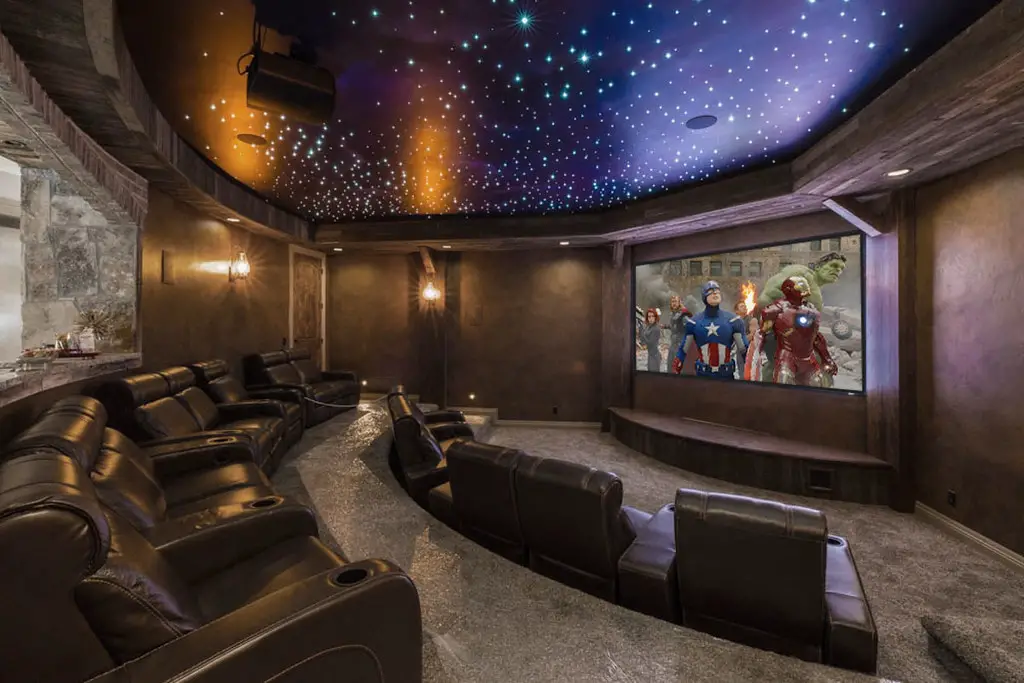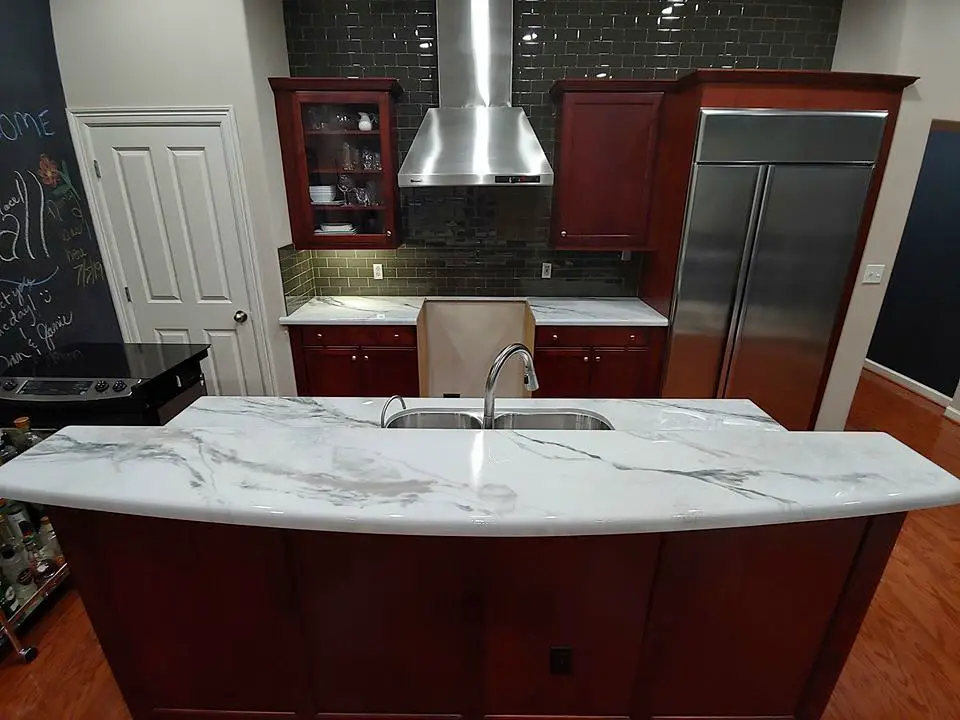Trends in home design come and go, and certain once-coveted features are now becoming less desirable among modern buyers. Many homeowners are prioritizing practicality, efficiency, and low-maintenance living over extravagant, specialized spaces. From formal dining rooms to expensive wine cellars, these features no longer hold the same appeal they once did. Here are some home design elements that are falling out of favor in today’s real estate market due to the financial burdens they can quickly become.
1. Elaborate Outdoor Kitchens

An outdoor kitchen might seem like an attractive addition, but in reality, it often goes unused. The cost of installing built-in grills, refrigerators, and extensive countertops can be steep, and many homeowners find that they don’t use these features often enough to justify the expense, says the Wall Street Journal. For those living in regions with colder climates, an outdoor kitchen may be impractical for much of the year. Instead, buyers are focusing on versatile outdoor spaces that require less maintenance and investment.
A well-designed patio or deck with comfortable seating and a simple grill is often more appealing than an elaborate outdoor kitchen. Many homebuyers are looking for functional, low-maintenance outdoor areas where they can relax without the hassle of maintaining multiple appliances. The upkeep required for outdoor kitchens, including weatherproofing and seasonal cleaning, can deter potential buyers. As preferences shift toward simplicity and usability, outdoor kitchens are losing their appeal.
2. Over-the-Top Smart Home Systems

While smart home technology remains popular, overly complex systems can be overwhelming for many buyers. Fully integrated systems that control lighting, security, and climate may seem impressive, but they often require ongoing maintenance and technical expertise. Marketplace notes that many buyers prefer basic smart features, such as programmable thermostats or video doorbells, over a high-tech setup that feels excessive. Simple, user-friendly technology is in higher demand than intricate, high-maintenance systems.
Another issue with advanced smart home setups is compatibility and long-term viability. As technology rapidly evolves, expensive integrated systems can become obsolete, requiring costly upgrades or replacements. Buyers may worry about being locked into a particular ecosystem that could limit their options in the future. A home with selectively placed smart features that enhance convenience without overcomplicating daily life is often the preferred choice.
3. Swimming Pools

While a backyard pool might seem like a dream feature, many buyers see it as more of a hassle than a luxury. The cost of installation, maintenance, and heating can be prohibitively high, making pools a financial burden. Families with young children may also have safety concerns, further reducing the appeal of having a pool. In regions with shorter swimming seasons, pools often go unused for much of the year, leading many buyers to see them as an unnecessary expense, notes NBC.
Homeowners who prioritize outdoor living spaces often prefer simpler features like fire pits, shaded patios, or hot tubs. These alternatives provide relaxation without the high costs and maintenance that come with a swimming pool. Additionally, many homebuyers look for properties with low-maintenance yards that do not require constant upkeep. As preferences shift toward practicality and cost-efficiency, pools are losing their status as a must-have home feature.
4. Luxury Chef’s Kitchens

A high-end chef’s kitchen with professional-grade appliances may look impressive, but it often fails to provide a solid return on investment. Many buyers today prioritize practicality over luxury, opting for kitchens with mid-range appliances that meet their everyday needs. Real Simple says that the cost of premium features, such as built-in espresso machines or oversized ranges, can be difficult to justify, especially if the homeowner rarely cooks gourmet meals. Buyers often see these upgrades as unnecessary expenses rather than must-have amenities.
Additionally, maintaining and repairing high-end kitchen appliances can be costly and inconvenient. Potential buyers may be wary of the added upkeep, preferring simple, functional kitchens that align with their lifestyle. A well-designed space with quality finishes and efficient storage is often more appealing than an ultra-luxurious setup. As a result, many homeowners are opting for stylish yet practical kitchens that blend affordability with modern convenience.
5. Expansive Primary Suites

Large primary suites with sitting areas and fireplaces once symbolized luxury, but today’s buyers are prioritizing practicality. Oversized bedrooms can feel excessive, especially in homes where square footage could be better utilized for functional spaces like home offices or storage. Many buyers now prefer well-designed, efficient bedrooms that focus on comfort without unnecessary extravagance. Energy efficiency is also a growing concern, as heating and cooling large bedrooms can lead to higher utility costs.
Rather than extra seating areas or decorative fireplaces, buyers are looking for primary suites with practical features such as built-in storage and modern lighting. The trend is shifting toward more balanced layouts that optimize space rather than emphasizing grandeur. Homeowners who want a cozy retreat prioritize thoughtful design elements over sheer size. As a result, massive primary suites are becoming less of a selling point in today’s market.
6. Whirlpool Tubs

Whirlpool tubs were once considered a luxurious bathroom upgrade, but they have fallen out of favor with many homebuyers. These tubs require significant water usage and frequent maintenance, making them impractical for daily use. Homeowners are increasingly opting for spacious walk-in showers with rainfall showerheads and modern tile designs instead. Large showers offer both functionality and aesthetic appeal, making them a more desirable feature than bulky whirlpool tubs.
Additionally, many buyers associate whirlpool tubs with higher cleaning demands and potential mechanical failures. The hassle of keeping jets clean and the potential for mold buildup make these tubs less attractive. Walk-in showers with bench seating, steam options, and high-end fixtures are now the preferred luxury bathroom upgrade. As buyers lean toward practical, easy-to-maintain bathroom designs, whirlpool tubs are quickly becoming outdated.
7. Three-Car Garages

Oversized garages were once a sought-after feature, but today, many buyers find them unnecessary. With the rise of remote work and improved public transportation in urban areas, fewer families need space for multiple vehicles. The extra square footage dedicated to a third garage bay is often seen as wasteful when it could be used for additional living space instead.
Instead, homebuyers prioritize functional garages that offer ample storage and organization. Many prefer a well-designed two-car garage with built-in shelving and smart storage solutions over a large, underused space. As home designs become more efficient, three-car garages are losing their appeal.
8. Home Theaters

Dedicated home theaters were once a sought-after luxury, but their appeal has diminished in recent years. Many homeowners find that they don’t use a theater room frequently enough to justify the space. With advancements in high-quality televisions and surround sound systems, any living room can now function as a media space without requiring a separate theater. Additionally, the rise of streaming services and mobile devices has made traditional home theaters less relevant.
Buyers today prefer multipurpose entertainment areas that can be used for gaming, lounging, or family gatherings. A flexible living space with comfortable seating and a large TV is often more desirable than a room solely dedicated to movie-watching. As a result, many home theaters are being repurposed into playrooms, home gyms, or guest rooms to maximize functionality.
9. Ornate Fireplaces

Grand fireplaces with elaborate mantels were once a hallmark of luxury homes, but their appeal has faded. Many buyers, particularly in warmer climates, see them as unnecessary and inefficient. Traditional wood-burning fireplaces require upkeep, cleaning, and chimney maintenance, making them less practical for modern living.
Instead, homebuyers favor sleek, low-profile fireplaces or alternative heating solutions like radiant floor heating. Some prefer to remove fireplaces entirely to free up wall space for larger windows or built-in shelving. As energy efficiency becomes a priority, ornate fireplaces are being replaced with more streamlined and functional designs.
10. Elaborate Landscaping

Elaborate landscaping with intricate flower beds, large water features, and extensive lawns is becoming less desirable. Many buyers prefer low-maintenance yards that require minimal upkeep and water consumption. The trend toward sustainability and eco-friendly landscaping has led to an increase in interest in native plants, xeriscaping, and artificial turf. These options reduce the need for constant watering, mowing, and fertilizing, making them more appealing to busy homeowners.
For many buyers, a simple, well-maintained yard with a patio or small garden is preferable to an elaborate landscape design that demands significant time and effort. The cost of professional landscaping services can also be a turnoff, as buyers seek homes with easy-to-manage outdoor spaces. As the desire for sustainability and practicality grows, high-maintenance landscaping is falling out of favor.
11. Expensive Wine Cellars

While a personal wine cellar may seem like a luxurious addition, it’s losing popularity among homebuyers. Many see it as a niche feature that takes up valuable space and requires ongoing maintenance. Unless a buyer is a serious wine collector, a dedicated wine cellar often feels unnecessary. The cost of temperature control, shelving, and upkeep can be a deterrent, especially for those who drink wine casually rather than store it long-term.
Instead, buyers are leaning toward more practical wine storage solutions, such as built-in wine fridges or stylish bar cabinets. These options provide convenience without requiring an entire room or extensive maintenance. As homebuyers prioritize functional and versatile spaces, wine cellars are increasingly seen as an outdated luxury rather than a must-have feature.
12. Elaborate Entryways

Massive two-story entryways with grand staircases and oversized chandeliers are losing their charm. While they may make a dramatic first impression, they often feel cold, inefficient, and impractical for everyday living. Buyers today prioritize functional entry spaces with built-in storage, mudrooms, or cozy foyers that serve a practical purpose.
Instead, homeowners prefer welcoming, well-designed entryways that balance aesthetics with usability. Features like bench seating, hooks for coats, and streamlined lighting create a space that is both stylish and functional. As home designs become more focused on livability, elaborate entryways are being replaced with more practical alternatives.
13. Overly Customized Closets

Closet systems with specialized racks, drawers, and islands may look impressive but can be a drawback for many buyers. Over-customization can make the space feel rigid, limiting its functionality for future homeowners. A closet designed specifically for one person’s wardrobe may not suit the next owner’s needs.
Instead, buyers prefer simple, flexible closet designs they can personalize themselves. Adjustable shelving, ample hanging space, and modular storage solutions are far more desirable than highly specific built-ins. A closet should enhance organization without restricting how it can be used.
14. Marble Countertops

Marble countertops exude luxury, but maintaining them can be a nightmare. Marble is porous and easily absorbs stains from common kitchen ingredients like coffee, wine, and oil. Without frequent sealing and careful upkeep, it can quickly lose its pristine look. While the material is undeniably beautiful, it’s not ideal for high-traffic areas like kitchens.
Additionally, marble is prone to scratching and etching from acidic foods and cleaning products. Unlike durable alternatives such as quartz or granite, it demands constant attention to keep it looking flawless. If you love the look of marble but want less maintenance, engineered stone options can offer a similar aesthetic with greater durability. True luxury should simplify life, not complicate it.
